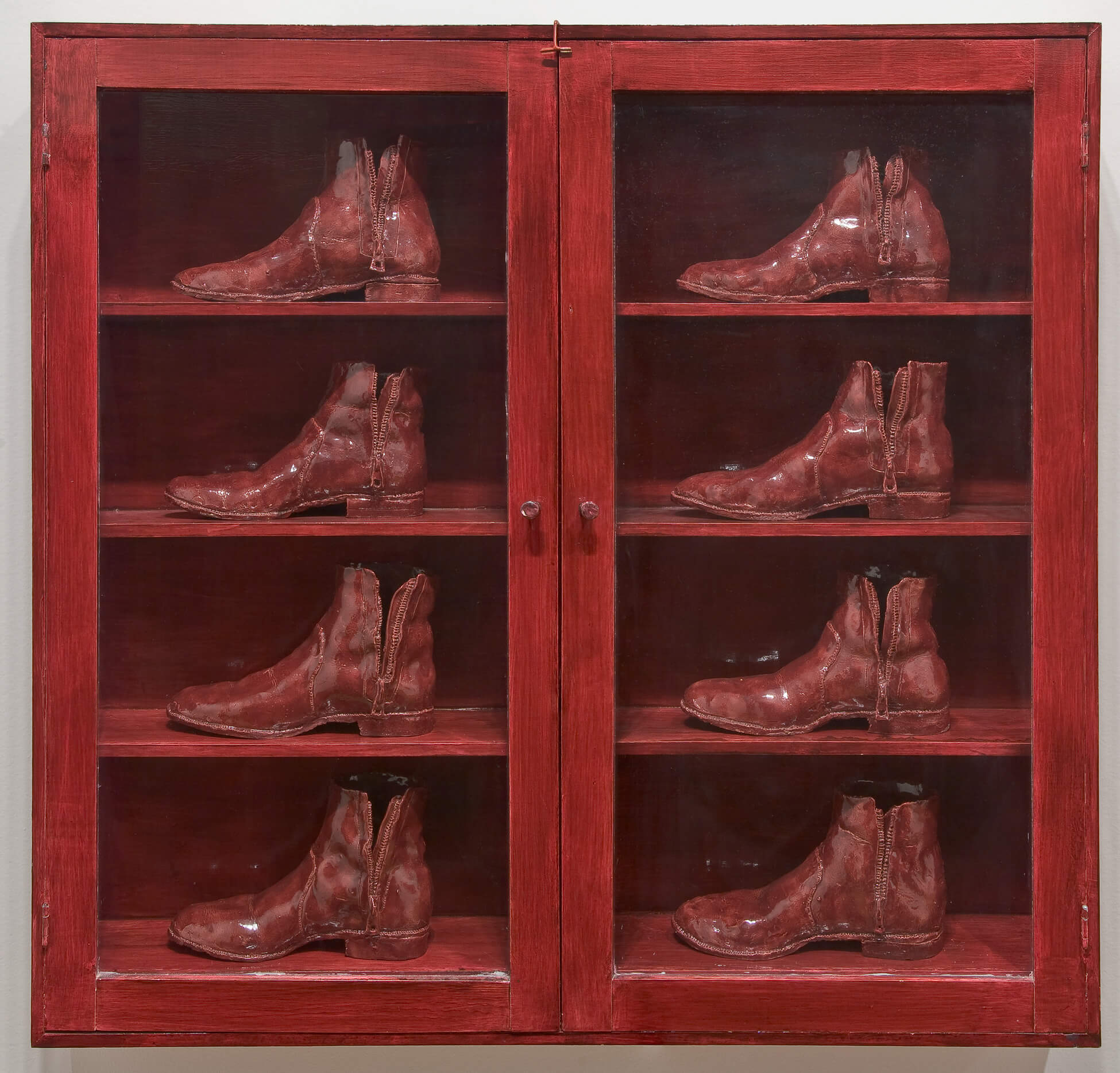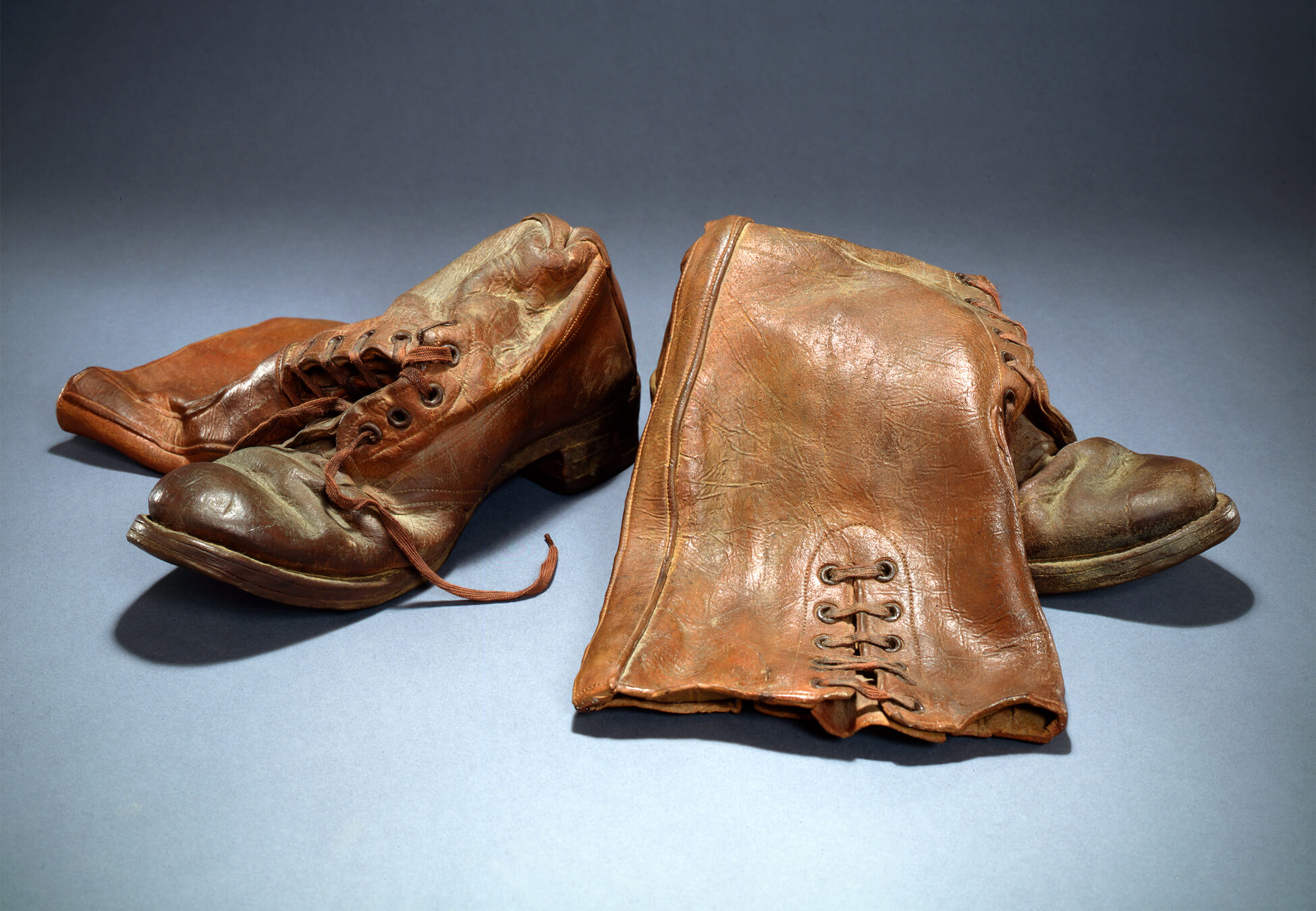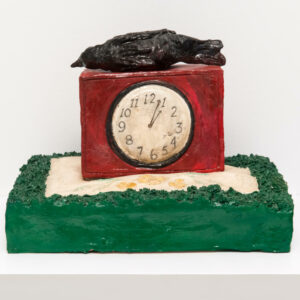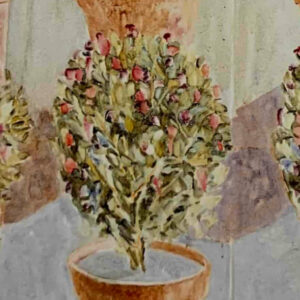Eight Red Boots 1973

Gathie Falk, Eight Red Boots, 1973
Red-glazed ceramic in painted plywood and glass cabinet, 101.2 x 105.7 x 15.5 cm (cabinet); boots: 17 x 28 x 10 cm each (approx.)
National Gallery of Canada, Ottawa
In Eight Red Boots, Gathie Falk displays eight ceramic versions of men’s leather zippered ankle boots in a wooden display case with four shelves and two closed glass doors. Each shoe is shaped for the right foot, without a left shoe to accompany it, and positioned to reveal the inner side so that we see the instep and lowered zipper of each boot. It is the sort of display one might expect to see at a shoe store or a cobbler, except for one unusual detail: the boots are made of ceramic and glazed a deep, rich red, and the wooden display case is painted to match.

After the Fruit Piles series, the ceramic shoes in cabinets are arguably Falk’s most recognizable works. Eight Red Boots, in the collection of the National Gallery of Canada, is particularly well known. Shoes are a recurring element in Falk’s work: they were central to Skipping Ropes, a performance she created in 1968; they recur in ceramic form throughout her oeuvre; and they appear, repeated, in the monumental photo-based work Crossed Ankles, 1998. As Falk noted in her autobiography, “From the first time I had used shoes, in my 1968 workshop performance, I understood their homely power, their ability to symbolize human presence and also human enterprise—tasks undertaken, distances walked—in an unpretentious way.”
Because the shoes in Eight Red Boots are not conceived as pairs, we are prompted to think about their absent wearers. While the serial presentation of similar shoes should achieve the Pop art pursuit of memorializing consumer objects, Falk’s personalization of the shoes, through the evocation of their missing owners, as well as her use of hand-built clay, results in a work of art that is situated in the quotidian but is anything but.
Calgary-born, California-based artist Marilyn Levine (1935–2005) was also producing shoes from clay at precisely the same time that Falk created this work. While the two women may not have known each other, they had a mutual association with the Funk art movement through their practices of sculptural ceramics. Comparing Falk’s men’s shoes with those produced by Levine—such as John’s Mountie Boots, 1973—it becomes evident how important it is to look to a more inflected telling of art history in order to contextualize Falk accurately. But it also shows how Falk uses colour, repetition, and display to create works that make the ordinary extraordinary, rather than settling on the trompe l’oeil approach to depicting the everyday preferred by Levine.

 About the Author
About the Author
 More Online Art Books
More Online Art Books
 Acknowledgements
Acknowledgements